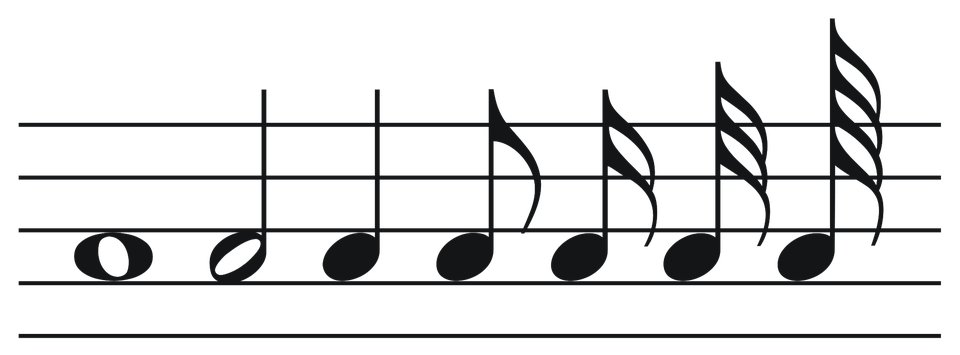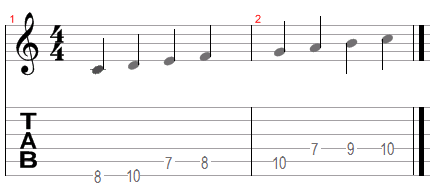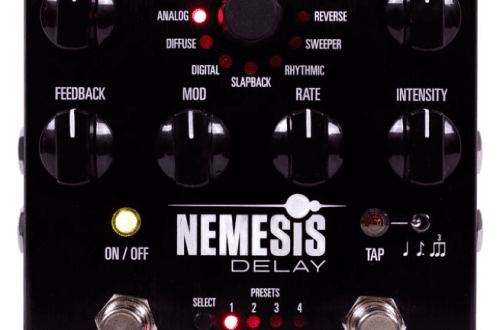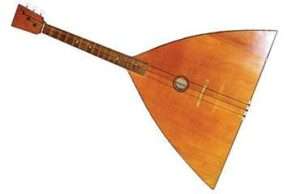
Tablature or sheet music?

On the one hand, colleagues from the band shower us with their compositions created in GuitarPro, on the other hand, a teacher at a music school gives us songs in sheet music. On the one hand, it is faster to learn the songs with hints where to put your finger, and on the other hand … why can’t I decide about it myself?
Reading sheet music develops
You have probably wondered more than once whether it is worth learning to read sheet music. I admit that this path was difficult for me and it is still difficult to this day, but I noticed some important aspects that made reading sheet music win over the use of tablature.
I started, as probably most of you, from reading taboos. It is a very intuitive method of writing songs, however, it has four significant drawbacks:
– dictates the way the tablature author plays
– is written for the selected instrument
– does not take into account the exact rhythmic notation
– dictates the place where the sound will be played
Notation of tablature (professionally made) is nothing else than translating the interpretation of the instrument part into paper. This can be an advantage as well as a disadvantage. If we want to recreate a song the way the author played it, tablature is the right tool. It takes into account technical licks, the way of fingering, as well as interpretative flavors (vibrato, pull-ups, slides, etc.).

Notes are signposts, tablature is a specific path. Someone’s path may not be the best path for you.
Reading sheet music, on the other hand, has the advantage that it allows the musician to decide for himself how to play the notes. Notes determine the pitches, not their location on the instrument. This is especially important for guitarists and bass players, because the same sound can be played in several different places on the fingerboard. The musician decides for himself which fingering is convenient for him.
PS. for guitarists and bassists
The sonic aspect should also be mentioned. Sound A na strunie G it has a different timbre than the same note played on the string D. This is due to the different length of the active string and their thickness. Putting it into practice, sound A played on a string G, has a greater attack, a more “string” (metallic hum) is heard, it gives a more open, spatial effect. But A zagrane na strunie D it has a more subdued color, short, compact, soft.
Reading sheet music requires sacrifice
Sheet music is a language that is worth learning, but it is not obligatory. It broadens your horizons, but like any language, learning it takes effort.

Reading sheet music requires knowing:
- recording sounds in different keys,
- recording of rhythmic divisions,
- recording forms of composition,
- the location of sounds on the instrument,
- your technical capabilities.
Trying to acquire this skill, we develop:
- musical awareness – the notes tell us where to get, but it’s up to us how we do it,
- using the language of musicians – good communication (especially the musical one) is the basis of teamwork,
- awareness of the rhythm,
- the technique of the game.
Learning to read sheet music
- Familiarize yourself with the theory. If you are a beginner use music books, music manuals, preferably those related to your instrument. However, if you know the names of the sounds and their location on the instrument, get a music dictionary, e.g. Music glossary (published by PWM, by Jerzy Habel).
- Divide your learning into exercises related to recognizing sounds and reading the rhythm.
- Identifying sounds – take a book of notes and read the notes one by one by saying their names. It’s also worth finding these sounds on your instrument. Objective: To recognize and read the pitch of notes from your head without thinking.
- Reading the beat – according to the rules explained in the textbooks, try to tap or sing after 1. beat of the piece. Only when you feel that you are already fluent in a given episode, move on to the next bar. ATTENTION! Exercise at a slow pace and use it to do so metronome. You can also tap / jerk a beat on one note on your instrument. Objective: tapping smoothly, singing rhythms at slow paces.
- Learning with the instrument. After gaining the above skills, we combine both previous exercises.
- In slow tempos, we try to read 1 bar from the notation. We learn until we start playing it smoothly.
- After learning the next bar, we combine it with the previous one. We repeat this procedure until we learn the entire piece.
Learn new bars every day, even if the previous bars aren’t 100% successful yet. This is a long process and requires systematic work. Therefore, I wish you a lot of patience and persistence in the exercises. I am also waiting for feedback on the article. I am happy to answer various questions, but also listen to your comments.





